nutkana – refers to Nootka, likely Captain Cook’s rendering of what he thought the Nuu-chah-nulth people of Vancouver Island were calling themselves or their territory
Observed location: Union Bay Natural Area, Seattle, WA
Tools/resources used to identify:
Native range: Western North America (from Alaska to N. California and east to the Rockies)
- sea-level to mid-elevations
- various ecosystems including moist, riparian zones, shrubby wetlands, woodlands, prairies, and meadows
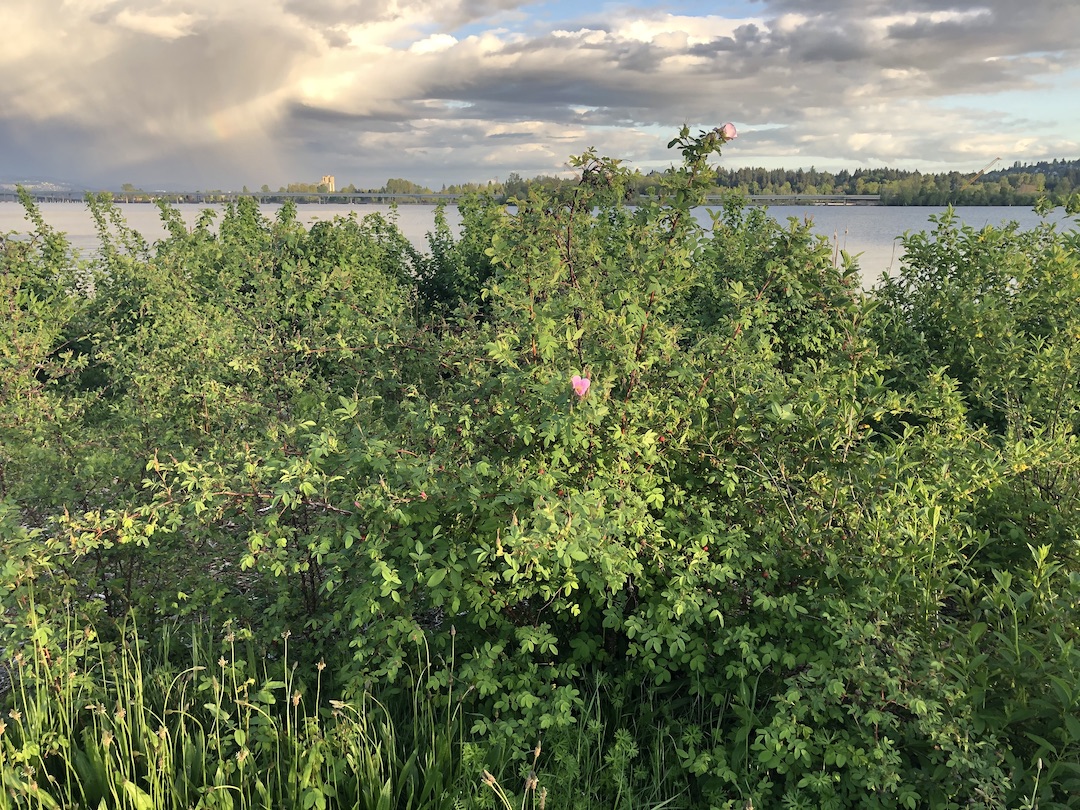
Leaves:
- alternate
- compound w/ odd number (5 or 7) toothed leaflets
- elliptic leaflets, 1–7 cm. long
- leaflets have more or less rounded tips
- pair of large thorns at base of each leaf
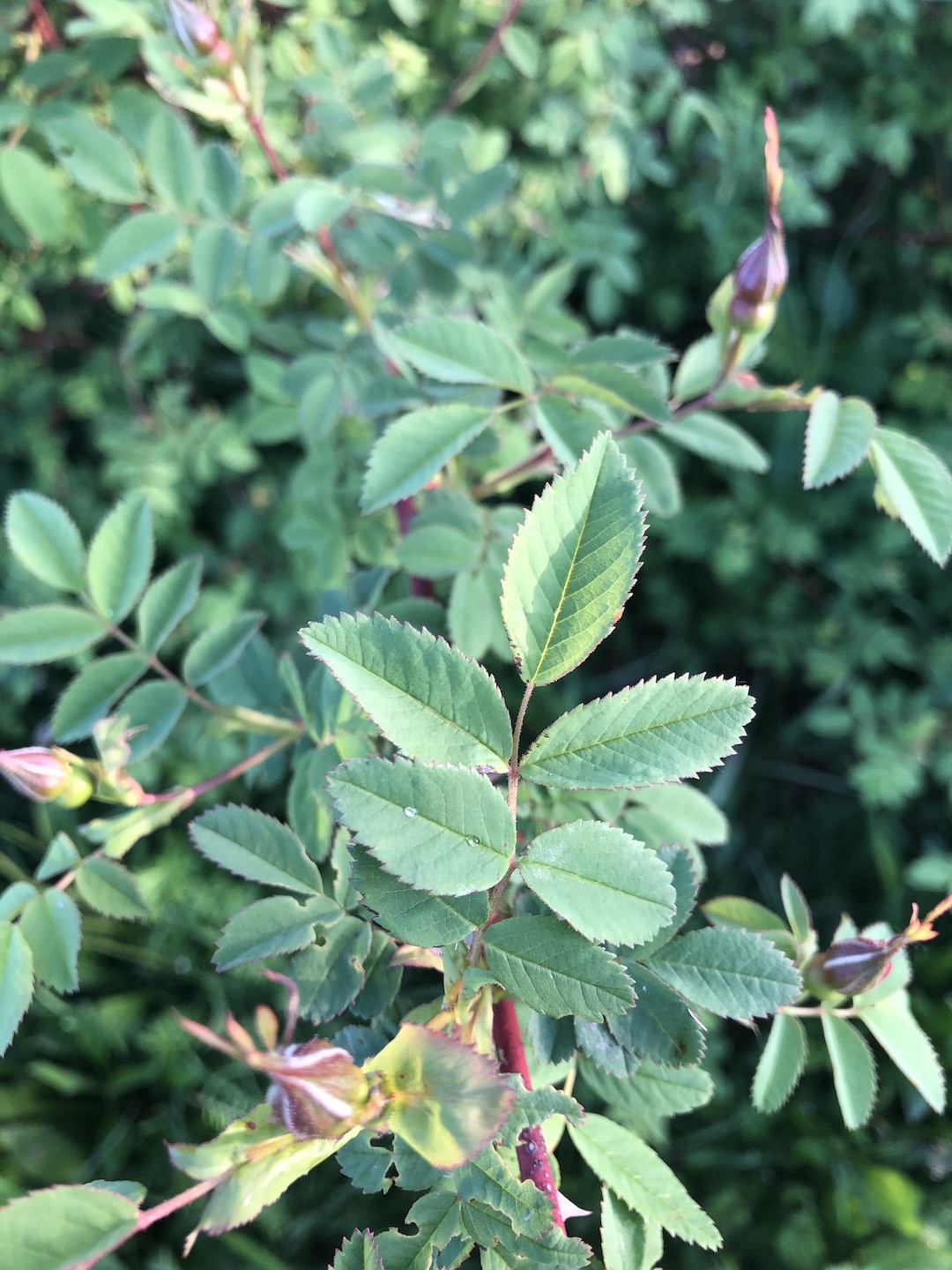
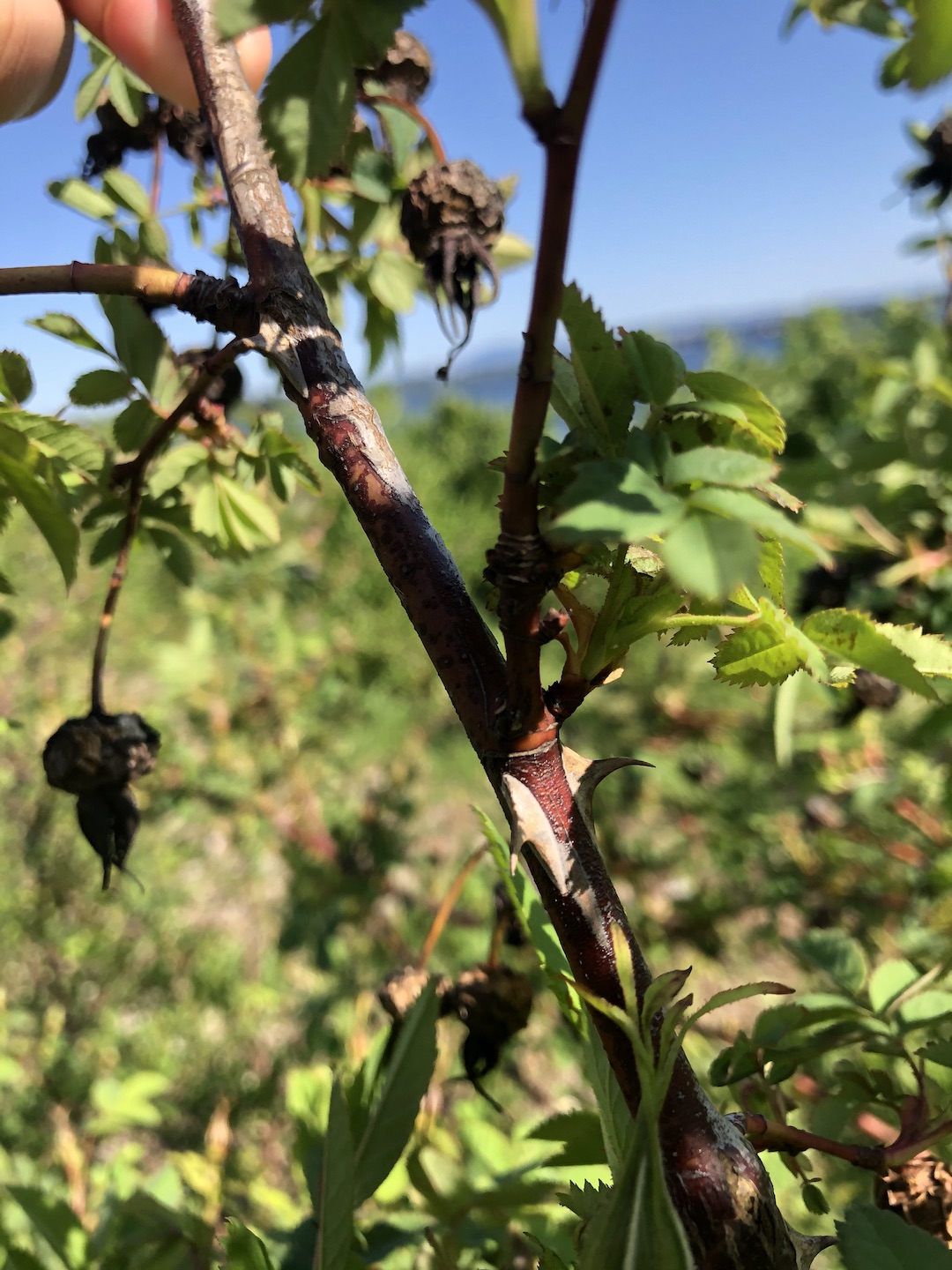
Flowers:
- pink
- large (4–8 cm. across)
- singly borne (and sometimes in pairs)
- very long (~length of petals), narrow sepals
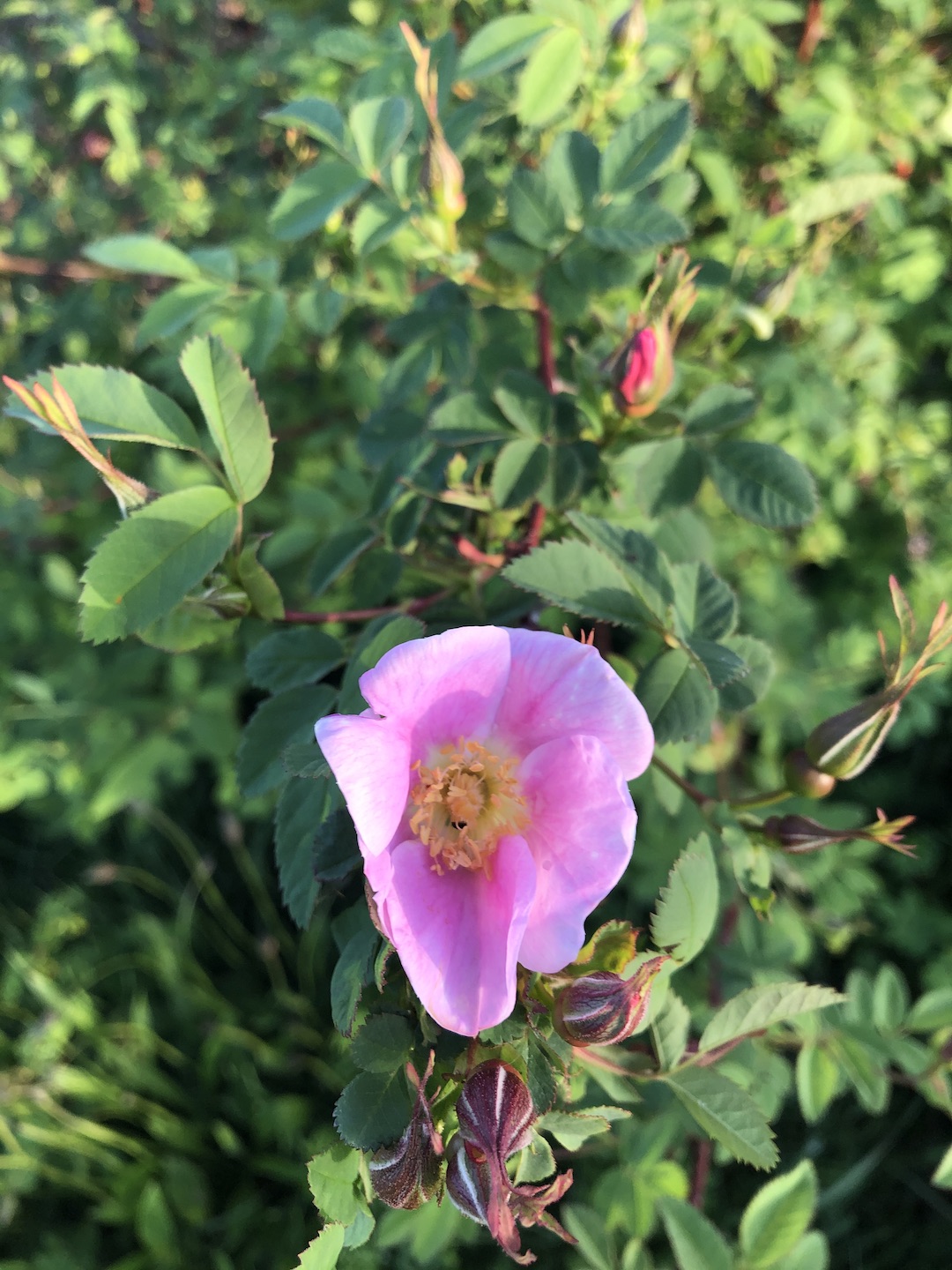
Fruit:
- purplish-red
- round ‘hips’
- 1–2 cm. across
- contains numerous bony, hairy achenes (dry, one-seeded fruit lacking special seams that split to release the seed)
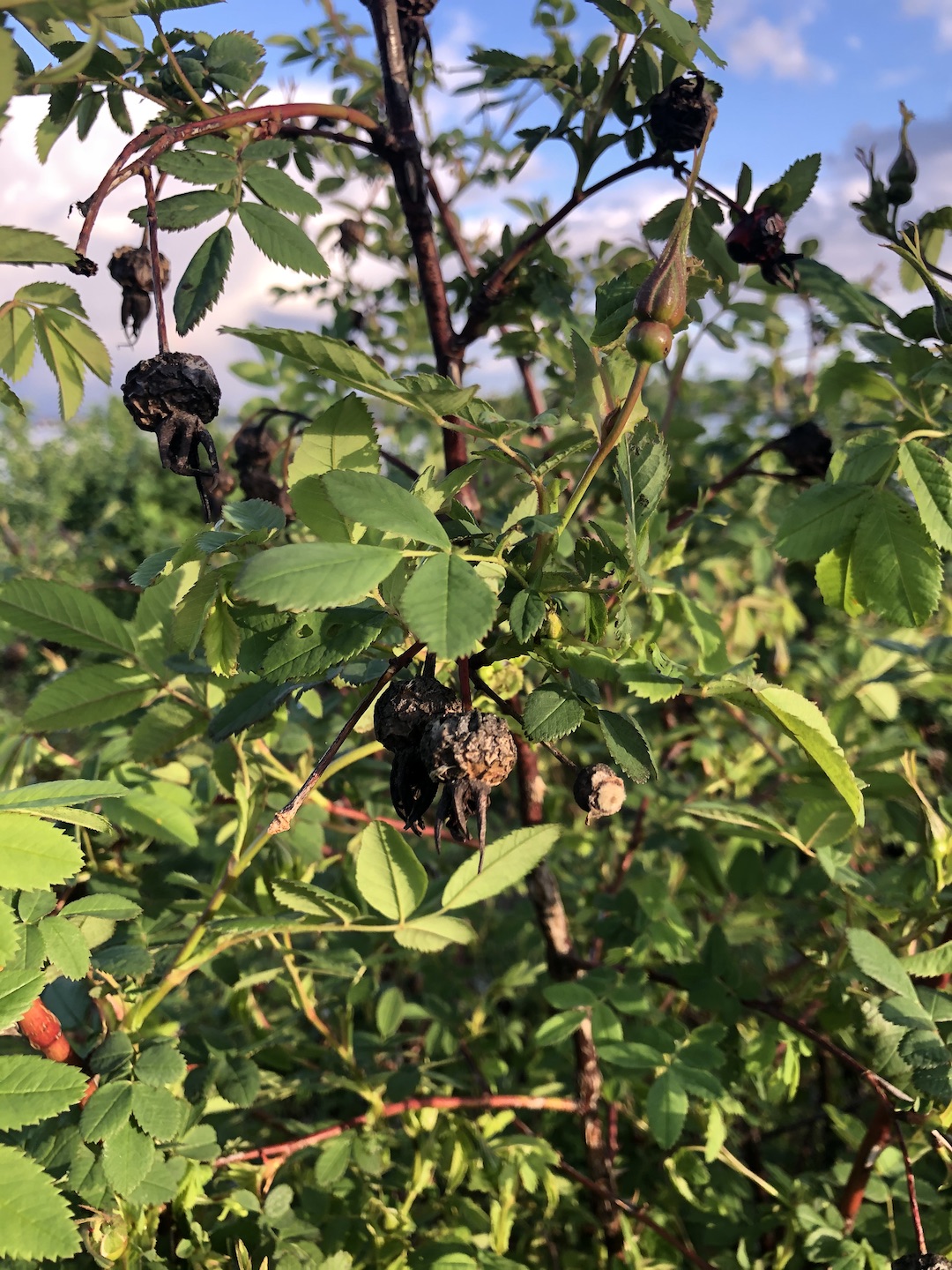
Other characteristics:
- deciduous
- flowers and hips are significantly larger than in most closely related species
Relevant info:
- widespread, polymorphic, hexaploid species
- hips, leaves, and bark had many medicinal uses in Native American culture in PNW
Ecology & Adaptations:
- native from coastal Alaska south to northern California, and eastward in the Rocky Mtns from Montana to New Mexico
- found in open or wooded areas, shorelines, rocky coasts and bluffs, meadows, thickets, streamside areas, roadsides, clearings, edges of woods
- at low to moderate elevations in the mountains (0–300 m.)
- widely distributed throughout Washington
- pollinated by bees
- seeds are dispersed by birds and mammals
- vegetative regeneration/reproduction:
- sprouts from the root crown and spreads via rhizomes
- forms thickets, especially in open (sunny) conditions
- herbivory & microbial defense:
- robust thorns on some but not all stems
- sepals (bud cover) contain compounds (cyanogenic glycosides, tannins and terpenes) that deter herbivory and resist microbial infection
- shade tolerant and can be abundant in forest understory but exhibits increased growth and fruit production with increasing light
- moderately dry conditions – deep roots help plant handle fluctuating water tables
- wildlife:
- fruits remain on plant through winter and are eaten by deer, elk, bears, coyotes and squirrels, among other animals
- squirrels, mice, beavers, and porcupines eat the twigs and leaves
- thickets are used for nesting and escape-cover by birds and small mammals